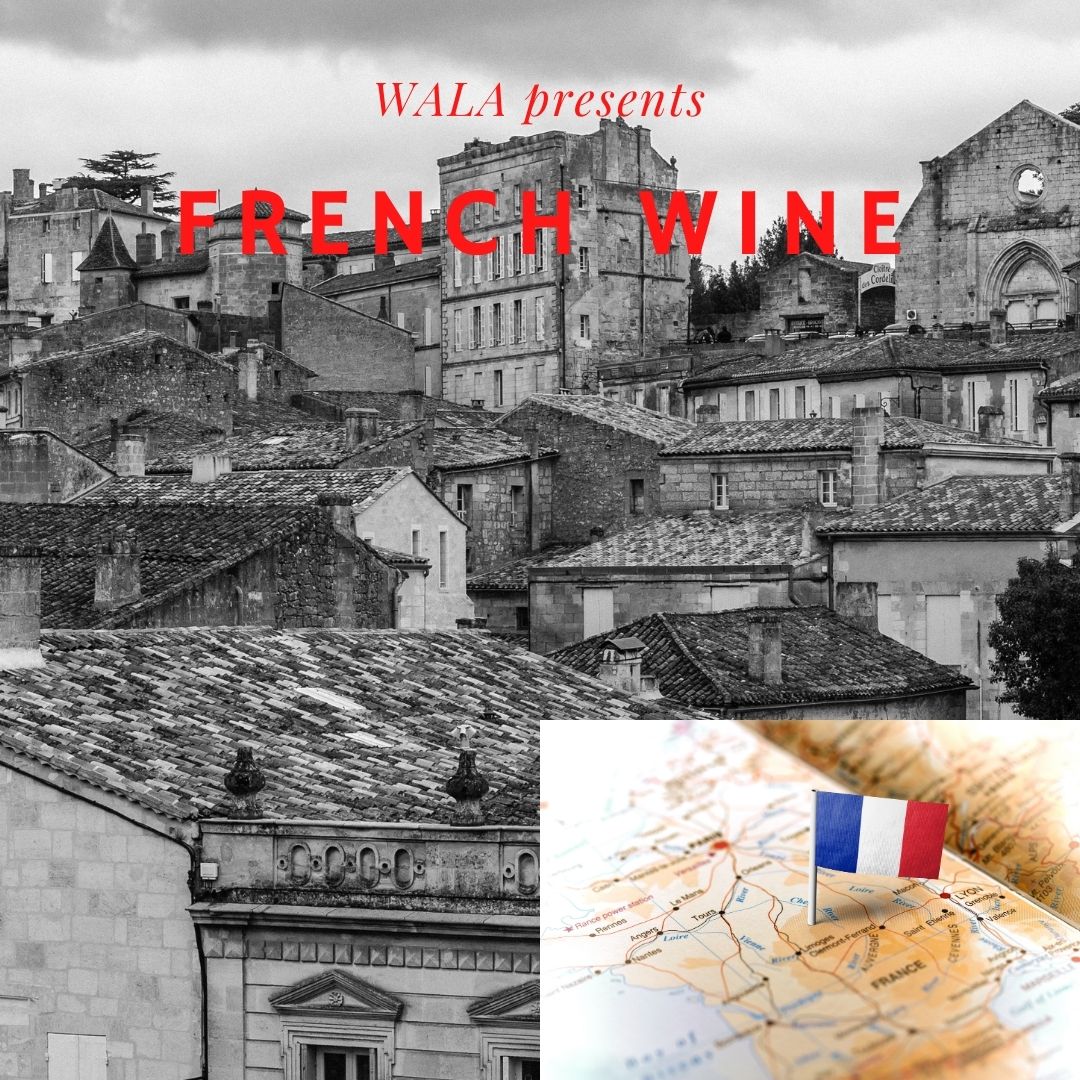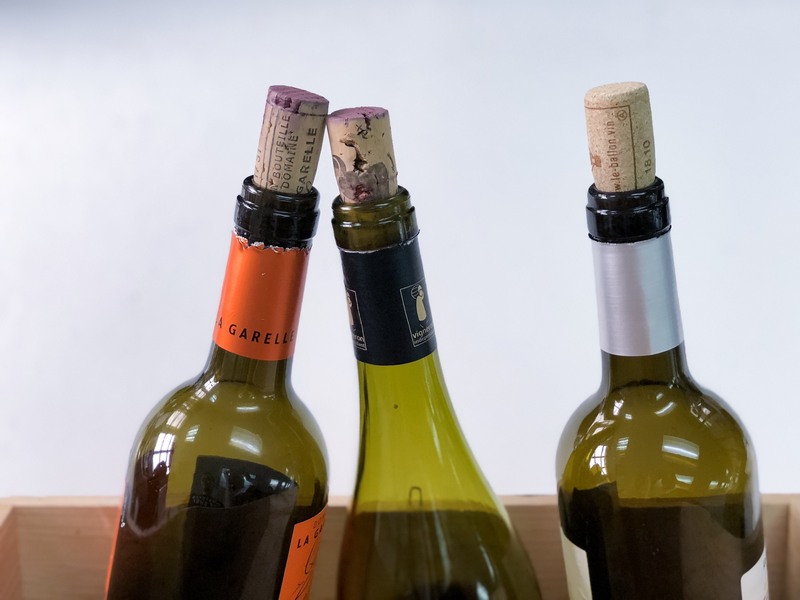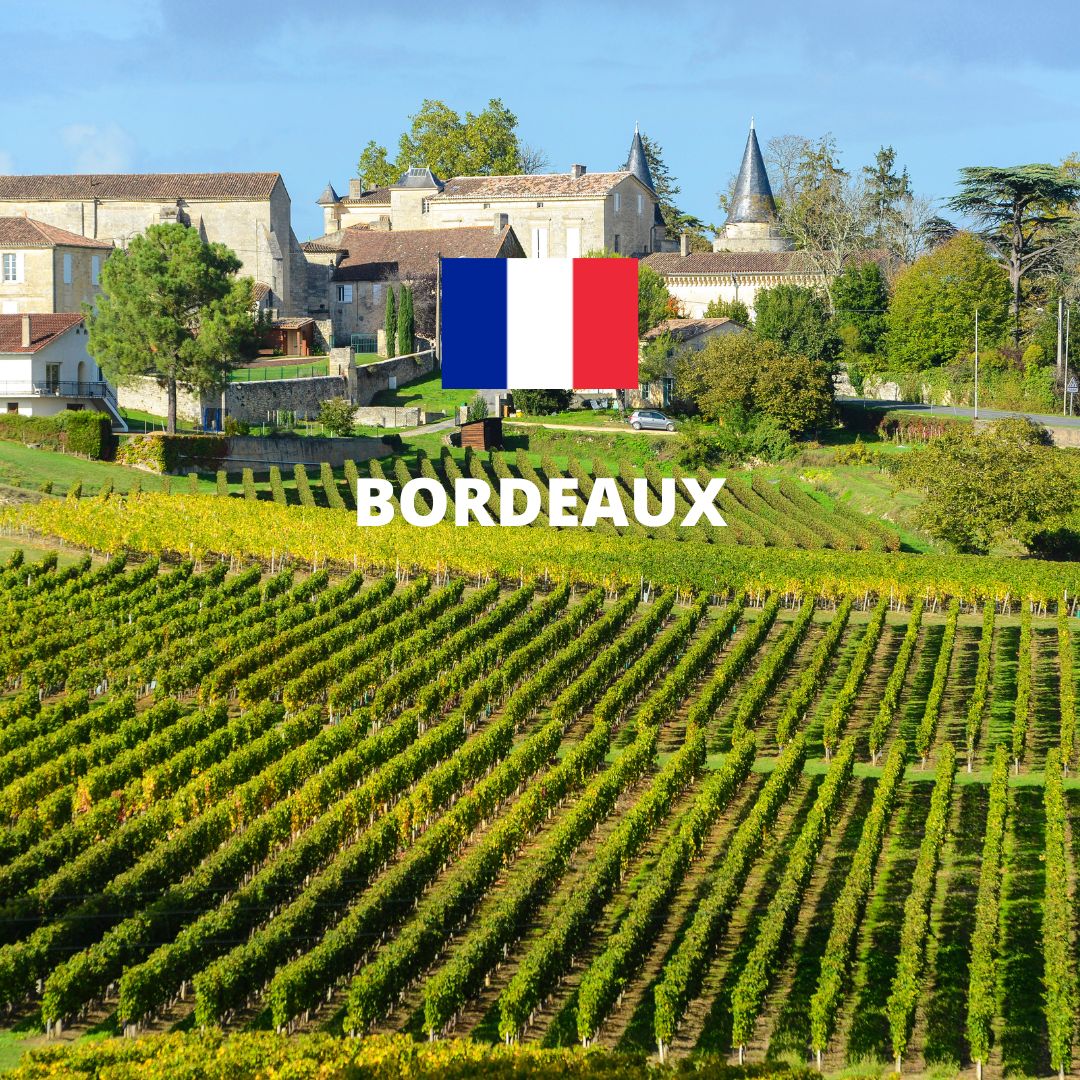

Bordeaux is probably the most well-known wine region in France.
It’s geographical position in France fueled much of its early growth. Bordeaux is essentially connected to the Atlantic Ocean through the Gironde river. Commerce has been pulsing through the veins of the Bordeaux port for centuries. One of the most notable trades in the port is the selling of wine. In the early days, the Atlantic Ocean connected Bordeaux with England (its biggest wine client) just nicely.
To a wine drinker, what you can appreciate is the diversity of wines that come from Bordeaux. We can get a good feel for this by dividing Bordeaux into 3 main areas, the Left Bank (left of the Gironde river), the Right Bank (right of the Gironde), and the South (Graves).
Because of soil and climate differences, the wines produced on both the left and right bank taste different. The clay soils on the right bank favour the growth of the Merlot grape. Whereas, the harder and less porous soil on the left bank favours the Cabernet Sauvignon grape.
Hence, left bank Chateaux tend to use a higher concentration of Cabernet Sauvignon grapes in their wines compared to Merlot. This is the opposite for right bank Chateaux where they tend to use more Merlot compared to Cabernet Sauvignon.
Besides Cabernet Sauvignon and Merlot, winemakers from both sides of the river use other grapes like Petit Verdot and Cabernet Franc are used in small quantities as well.
Interesting to note is that both the left bank and right bank have their own wine ranking systems. The Left Bank has a ranking system, called the 1855 classification system. The Right Bank on the other hand has its own ranking system starting in 1954 called the Saint-Emilion classification system.
You may have drank a lot of Bordeaux red wines but the region is also well-known for its white wines. The specific place that produces the majority of Bordeaux white wines is the sub-region called Pessac Leognan. The white wines in this area are made from a blend of Sauvignon Blanc and Semillon. They are also usually oaked in barrels to achieve a higher level of complexity.
Sauternes, another famous sub-region in Bordeaux produces many of the French sweet wines. Chateau d’Yquem is the most famous sweet wine maker in Sauternes.
The Bordeaux wine growing region is separated by two rivers – the Dordogne and the the Garonne – which meet to form the Gironde river.
The Left Bank of Bordeaux
It is located southwest of the Gironde and the Garonne. The Left Bank is dominated by gravel soils which hold the sun’s heat and is perfectly adapted to Cabernet Sauvignon. Along with the dominant Cabernet Sauvignon, Merlot is used to bring more roundness for the red wines. Petit Verdot and Cabernet Franc are other grape varieties used but in a smaller proportion. For the white wines, Sauvignon Blanc and Sémillon are mainly used while Muscadelle is used to a lesser proportion. The Left Bank is divided into two regions: Médoc and Graves.
Médoc
This region is located at the north of the Left Bank and contains two vast appellations
– Médoc AOC (Northern Médoc) and Haut-Médoc AOC (Southern Médoc) – and
6 communal appellations among the most prestigious in the world:
- St-Estèphe: it is the most northern of the six Médoc communes and differentiates with higher percentages of Merlot. The wines tend to have more acidity.
- Pauillac: positioned at the centre of Médoc, it is a remarkable terroir with three Premiers Crus Classés (Lafite-Rotschild, Latour and Mouton-Rothschild). The wines are powerful and can age for 20-40 years
- St-Julien: located between Margaux and Pauillac, it combines the finesse of Margaux with the power of Pauillac
- Margaux: it is the southern communal AOC and the wines offer finesse and delicacy
- Moulis: located at the west part of the Médoc, the wines are suave
- Listrac-Médoc: located near Moulis, the wines are tannic and age-worthy
Graves
This region is located at the south of the Left Bank and contains the Graves AOC, and two communal appellations:
- Pessac-Léognan: located at the south of Bordeaux, the appellation produces both red and white wines. The red wines use a higher percentage of Merlot than the Médoc and have a complex bouquet. The dry white wines are aged on their lees and develop complex aromas with notes of nuts and honey
- Sauternes/Barsac: this appellation is known for its dessert wines produced from botrytized grapes. The bouquet is complex and elegant with aromas of honey, hazelnuts, apricots and peaches
The Right Bank of Bordeaux
“Right bank” is used for all the vineyards located on the right bank of the Gironde and Dordogne rivers.
This region is limited by the Bourgeais and Blayes vineyards in the north-west and by the Castillon vineyards in the east. Between those, St Emilion, Pomerol and Fronsac vineyards are also part of the right bank.
The soil is mostly clay (Pomerol and St Emilion) or rocky (Fronsac).
St Emilion
Located more than 50km away from Bordeaux on the right bank of Dordogne river, St Emilion vineyards produce some of the most famous wines in the world. The “hill of the thousands chateaux”, as it is called, was classified as world’s heritage by UNESCO.
The main cepage in St Emilion is Merlot. It is commonly blended with Cabernet-Franc and Cabernet-Sauvignon.
Pomerol
Pomerol was made famous by the Merlot cepage and the generous clay soil. The Pomerol appellation is prestigious, yet the quality of the wines is heterogeneous. Pomerol appellation produces fine wines, rich in tannins, with a silky and delicate taste.
We have chosen 3 wineries in the region to bring you the best that the Bordeaux wine region has to offer.
Click the link below to learn more about the Bordeaux wine from
Les Hauts de Tousqiron, Chateau Piron and Chateau L'Escadre







